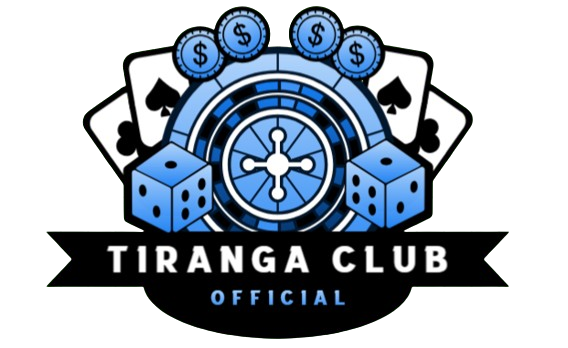The Tiranga — the Indian national flag — is arguably one of the strongest symbols of national pride, unity, and identity. The three distinct colors (saffron, white, and green) and the Ashoka Chakra in the center, the Tiranga symbolizes what India values as a country: bravery, peace, and prosperity. But then let us try to cross through this flag more widely under numbers and periods. Comes the idea of the Tiranga Period Number, a title which, while not conventional, raises an intriguing question of how number systems, order of alteration, and symbolism unite to form something new. What is the Tiranga Period Number?
The word “Tiranga Period Number” can be interpreted in numerous ways based on its position. Splitting the sentence, we get:

Tiranga: Means “tricolor” literally in Hindi and is the Indian national flag.
Period: Can be interpreted as time, cycles, or repetition.
Number: Can be interpreted as quantification, counting, or a numerical indicator.
Collectively, the “Tiranga Period Number” could be used to refer to a numeric or symbolic system in terms of periodicity (e.g., periods or political systems) in India symbolized by or equivalent to the Tiranga iconography.
Pedagogically or analytically, Tiranga Period Number can be imagined as a symbolic system counting various phases in Indian history, which are political, cultural, or historical in nature, each of which being characterized by one of the three colors of the flag. Or otherwise, it may be an alternative method of encoding developments, ethics, or values through a prism constructed using the tricolor.
The Symbolism of Tiranga’s Colors
To be able to comprehend any system that can have a “Tiranga Period Number,” we must know beforehand what each color of the flag represents:
Saffron (Upper Stripe): Represents courage, sacrifice, and a renunciation spirit. It represents strength and valor, and warriors and monks are typically associated with it.
White (Middle Stripe): Represents peace, purity, and truth. It represents a moral compass and dedication to a peaceful life.
Green (Bottom Stripe): Symbolizes fertility, growth, and prosperity. It symbolizes India’s strong agrarian heritage and closeness to the soil.
Ashoka Chakra (Navy Blue Wheel): Placed centrally within the white band, the 24-spoke wheel symbolizes the limitless wheel of law (Dharma). It symbolizes movement, advancement, and continuity.
If we use these symbols as a cycle or system of figures, we may use them to describe different “periods” of Indian development — social, political, or economic.
Seeing the Tiranga Period Number as a Socio-Political System
One method by which one may calculate a “Tiranga Period Number” is to plot India’s history since independence on three broad segments, each representing one color of the Tiranga.
Saffron Phase (1947–1977): Struggle and Courage
This phase would end up being the first post-independence decade. It was a decade of reconstruction, border security, institution-building, and sacrifices towards integrating the nation.
Highlights: Division, conflicts with border nations, constitution-making, and the establishment of democracy.
The White Phase (1977–1991): Truth and Change
Following the Emergency years, India turned inward to social justice and democratic values in a big way.
The process gained pace towards transparency, citizens’ rights, and economic stabilisation.
Major events: Post-Emergency reforms, coalition politics coming into the picture, and heightened awareness among people about rights.
The Green Phase (1991–Present): Expansion and Prosperity
Liberalisation of the Indian economy in 1991 brought in high industry and technology growth.
Green refers to the spurt in the growth of agriculture, digital economy, technology, and world popularity.
Major events: Economic reforms, IT growth, global integration, and social media revolutions.
Each of these periods can be given a “Tiranga Period Number” — e.g., 1 for saffron, 2 for white, and 3 for green — so that analysts and pedagogues would have a means of referring to nuanced historical periods by brief, convenient numerical codes.
Tiranga Period Number in Education and Policy
A system of such symbols can be applied to:
Education: Educating students on Indian history using color-coded timelines.
Civic Studies: Encouraging students to critically observe happenings around them with a Tiranga perspective — whether the present government’s policies lean more towards bravery (saffron), integrity (white), or prosperity (green).
Policy Making: Tiranga Period Numbers can be used by governments to divide development targets: i.e., Saffron Targets for defense and security, White Targets for governance and integrity, and Green Targets for economy and environment.
This enables barren policy or statistical speech to have a nanaffectively, deep, culturally enriched density.
Mathematical Meaning of Tiranga Period Numbers
For math or data science enthusiasts, the Tiranga Period Number can also be built as a base-3 symbol system in which each color is represented by a digit (Saffron = 0, White = 1, Green = 2). This provides a potential symbolic representation of timelines, events, or even historical figures.
For example, a word such as “210” in Tiranga base can represent a series of development (2), peace (1), and sacrifice (0) — a word picture in so many words of the development and growth of a nation or a leader over time.
Conclusion: A Symbolic and Systemic Tool for Reflection
The “Tiranga Period Number” might no longer be a textbook term today, but can be a symbolic thought paradigm that is new-age — a convergence of cultural identity, historical introspection, and systems thinking. It challenges us to look at the tricolor Indian flag as more than a symbol of national pride and apply it as a template for understanding India’s development through the centuries.
Looking forward, such cross-disciplinary concepts — fusing history, symbolism, and numerology — can potentially provide new modes of thinking, pedagogy, and reflection about our shared experience as a country.

